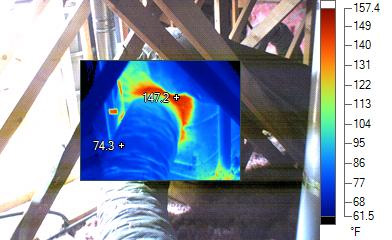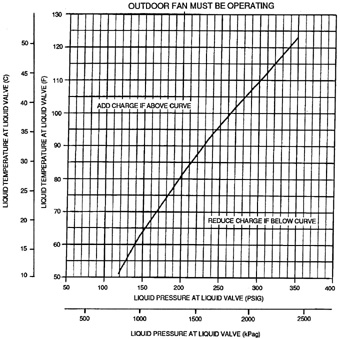Energy efficient HVAC systems - 101
Duct Leakage
Definition: Areas in a sealed duct system where cold or hot air leaks into an unconditioned space, which causes the conditioned space to be heated or cooled in an inefficient manner.
Figure 4-Duct leakage in an attic

Effect on efficiency: ‘Duct leakage contributes 10-30% of heating and cooling costs.’ Energy Efficient Building Construction in Florida. Florida: University of Florida, 2007
Solution: This is a very common problem in older commercial and residential buildings, where vermin may destroy ductwork, and is also occasionally found in newer buildings as well due to sloppy installation work. Problem areas may easily be detected by a duct leak inspection via infrared thermal imaging tools as well as duct pressure testing devices. If problem areas like the one illustrated in Figure 4 occur, the ductwork can usually be repaired inexpensively with tape, glue, and plastic straps. In some severe cases, some areas of ductwork may need to be replaced.
Refrigerant Undercharge/Overcharge
Definition: A lack or loss of refrigerant in a HVAC or refrigeration system which causes a unit to cool at a higher temperature, therefore causing the unit to run constantly, since it can not achieve the set-point temperature on the thermostat that has been set by the user. This problem will cause damage to mechanical components if left unresolved.
Effect on efficiency: “A refrigerant undercharge of 15% causes a 19.6% decrease in system (HVAC) efficiency.” Energy Efficient Building Construction in Florida. Florida: University of Florida, 2007
Solution: According to a recent study done by the EPA
on central air conditioners and heat pumps, 41% of the systems
examined were undercharged and 33% were overcharged. Both scenarios cause
an increase in energy use and premature failure. This is a very common problem with old or new
leaking units and new split units installed by sloppy HVAC contractors and
installers that do not have the proper charging tools and do not use proper
charging techniques. New HVAC systems come with some refrigerant, but refrigerant
must be added to compensate for the length of the variable copper pipes,
which many installers neglect. In leaking units, the leak must be found
and repaired. The best solution for determining the precise amount of refrigerant
needed is by a qualified technician using a digital superheat and subcooling
manifold gauge and a manufacturer’s charging chart.
Figure 5-A typical manufacturer's charging chart and a digital superheat and subcooling manifold gauge


© 2010 Cache Mechanical Systems LLC. All Rights Reserved.